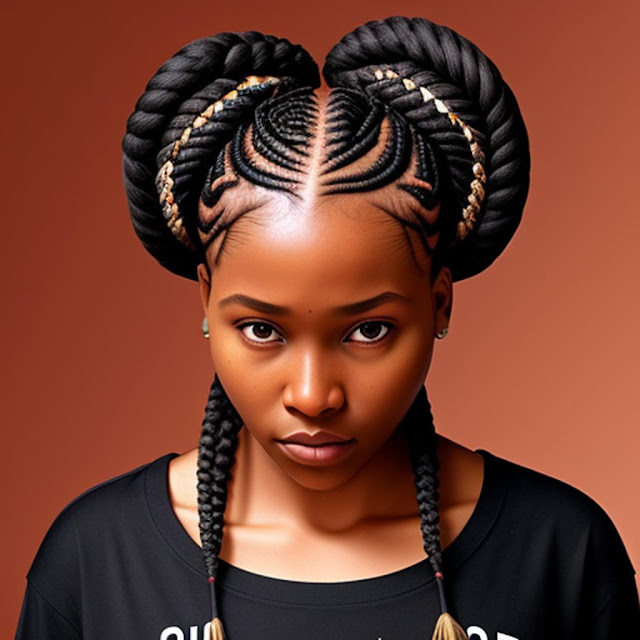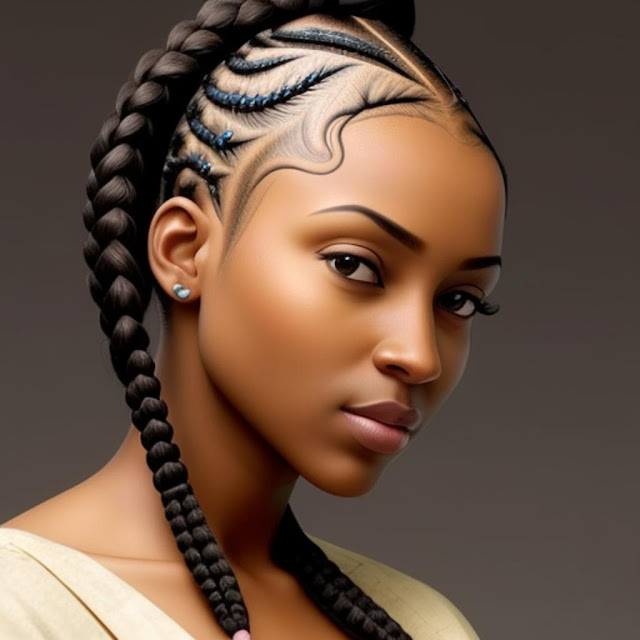Hairstyles have long served as a powerful medium for self-expression and cultural identity. Each style carries a unique story within its strands, from elegant updos to intricate braids. One such mesmerizing hairstyle is the Fulani braids, which have captured the imagination of people worldwide. In this article, we will delve into the rich history, stunning aesthetics, and cultural significance of Fulani braids. So, sit back, relax, and embark on a journey into the captivating world of Fulani braids!
Fulani Braids | Embrace the Enchanting Artistry and Cultural Significance of this Captivating Hairstyle
The Roots of Fulani Braids
Originating from the Fula people, also known as Fulani or Fulbe, a nomadic pastoralist ethnic group spread across West Africa, Fulani braids have been an integral part of their cultural heritage for centuries. These braids, also called "full cornrows" or "festival braids," are known for their intricate patterns and unique adornments, creating a distinct and unforgettable look.
An Art Form in Motion
Fulani braids are not merely a hairstyle; they are a form of art. The braiding technique used in Fulani hairstyles is complex and requires skillful craftsmanship. Intricate patterns, such as geometric shapes, zigzags, and thin cornrows, are woven together, resulting in a breathtaking tapestry of hair. These braids often extend from the forehead to the nape of the neck or cascade down the back, exuding elegance and grace.
Cultural Significance
Fulani braids hold deep cultural significance within the Fula community. They are often associated with various rites of passage, such as weddings, coming-of-age ceremonies, and other significant events. Each braid can convey different meanings, representing a person's social status, marital status, or even clan affiliation. Furthermore, Fulani braids are adorned with decorative elements like beads, cowrie shells, and metallic cuffs, symbolizing prosperity, beauty, and cultural pride.
The Allure Goes Global
In recent years, Fulani braids have transcended their cultural origins and become a beloved and sought-after style worldwide. Celebrities, fashion icons, and everyday people have embraced this enchanting hairstyle, appreciating its intricate beauty and cultural significance. Social media platforms have played a pivotal role in popularizing Fulani braids, with stunning images showcasing various interpretations and modern adaptations of this traditional style.
Embracing Fulani Braids | Tips and Inspiration
If you're captivated by the allure of Fulani braids and want to try this hairstyle, here are a few tips to get you started:
- Find a skilled hairstylist who specializes in braiding and has experience with Fulani braids.
- Choose the length and thickness of your braids based on your personal preferences and hair type.
- Experiment with different adornments such as beads, shells, and accessories to add a unique touch to your braids.
- Take inspiration from traditional Fulani braiding patterns while incorporating your own style to create a personalized look.
What Makes Fulani Braids a Unique and Exquisite Hairstyle?
Fulani braids are unique and exquisite hairstyles due to several distinguishing features. Firstly, the intricate patterns and designs created through the braiding technique showcase the skillful craftsmanship involved in their creation. From delicate geometric shapes to mesmerizing zigzag patterns, each braid becomes a work of art, transforming hair into a canvas of beauty and creativity.
Moreover, Fulani braids often incorporate adornments such as beads, cowrie shells, and metallic cuffs, adding an extra layer of elegance and cultural significance. These embellishments not only enhance the visual appeal of the braids but also carry symbolic meanings. For instance, cowrie shells symbolize wealth and prosperity, while beads can represent cultural heritage or personal expression.
The versatility of Fulani braids is another factor that contributes to their uniqueness. They can be styled in various ways, from intricate updos to cascading braids down the back. This adaptability allows individuals to showcase their personality and sense of style while still honoring the traditional aesthetics of Fulani braids.
Exploring the Cultural Significance of Fulani Braids: How Does this Ancient Tradition Continue to Inspire?
Fulani braids hold profound cultural significance within the Fula community and continue to inspire generations by preserving ancient traditions. These braids are deeply intertwined with rites of passage, cultural ceremonies, and social identities.
For centuries, Fulani braids have played a role in coming-of-age rituals, symbolizing the transition from childhood to adulthood. They are often intricately woven to reflect an individual's social status, clan affiliation, or marital status. By adorning Fulani braids, individuals proudly exhibit their cultural heritage, expressing a sense of belonging and identity.
Furthermore, Fulani braids serve as a means of cultural preservation. As the world becomes more interconnected, the Fula people strive to maintain and celebrate their unique traditions. The popularity and global recognition of Fulani braids have allowed this ancient hairstyle to transcend borders and bring awareness to the rich cultural tapestry of the Fula community. By embracing and sharing their cultural practices, the Fula people not only preserve their heritage but also inspire others to appreciate the beauty and significance of diverse cultural expressions.
In essence, Fulani braids continue to inspire by bridging the past and the present, fostering cultural pride, and encouraging a deeper understanding and appreciation of the cultural heritage they represent.
Fulani braids are more than just a trendy hairstyle; they embody a vibrant cultural legacy that continues to inspire and captivate. From their historical roots to their modern-day popularity, these braids represent the timeless beauty and artistic expression of the Fula people. So, why not embrace the allure of Fulani braids and celebrate the rich tapestry of culture and style they embody?
Let your hair become a canvas for tradition and self-expression, as you weave your own story with every braid.













.png)
.jpg)

0Comments